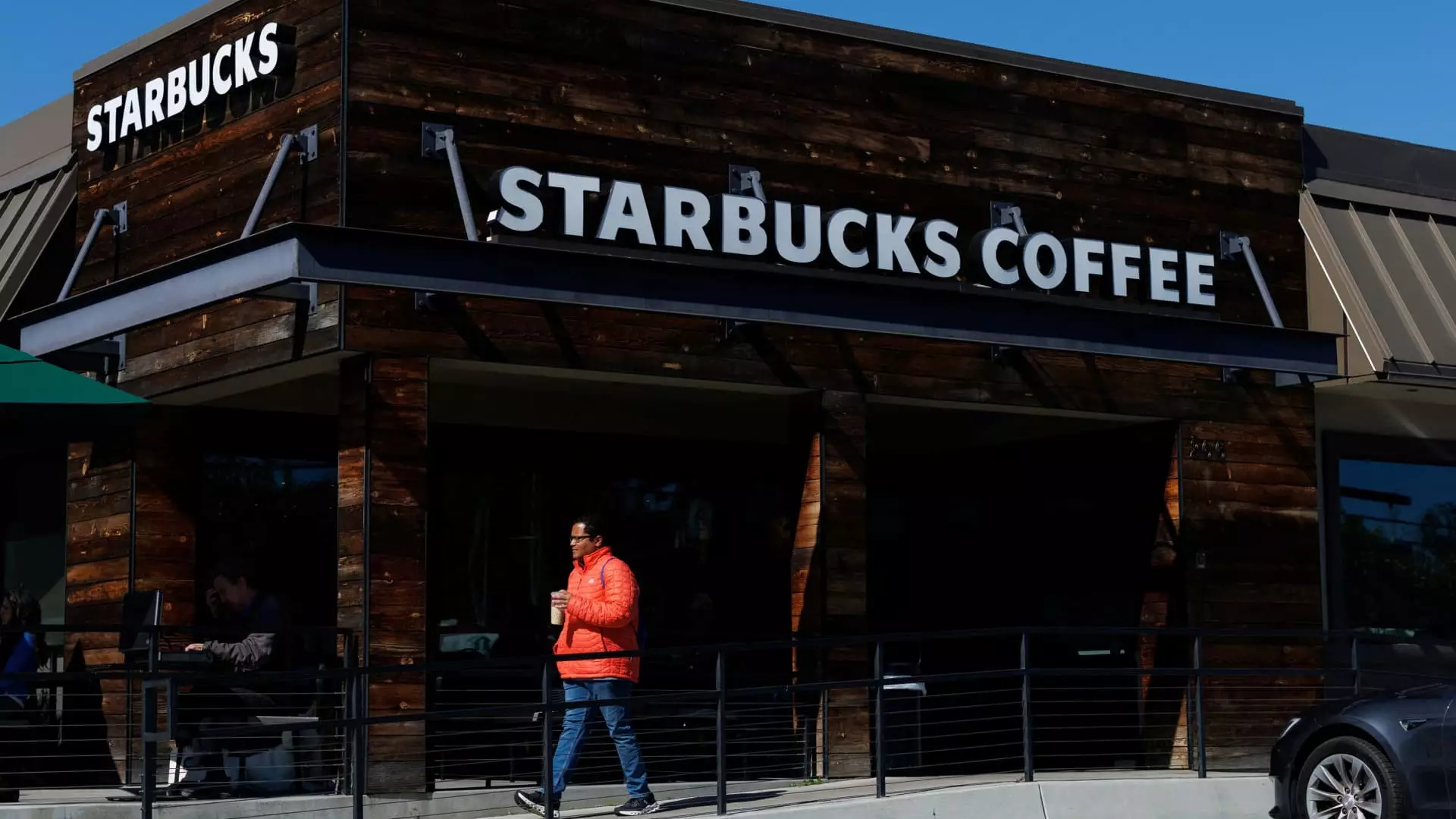In a tumultuous economic environment, restaurant stocks are currently experiencing a significant downturn that vividly illustrates the fragility of investor sentiment. On a bleak Monday morning, the ripple effects of President Donald Trump’s alarming decision to impose hefty tariffs on goods from essential trading partners sent shockwaves through the stock market. The immediate fallout has resulted in restaurant shares plummeting, underscoring the intertwined nature of global economic events and local businesses. While it may be easy to dismiss the tariffs as a distant threat, the real danger lies in the unyielding inflationary pressure they are likely to exert on consumers. This, in turn, poses a severe risk to consumer spending—an essential lifeline for restaurants that rely heavily on discretionary spending.
Considering the bleak outlook, UBS analyst Dennis Geiger succinctly articulated an alarming reality: the direct impact of tariffs on restaurant operational costs may seem manageable. However, the broader threat resides within the potential seismic shift in consumer behavior, capable of drastically reducing restaurant patronage. The aftermath of these tariffs is not merely a fleeting concern on Wall Street; it reveals a deeper malaise that could undermine the foundation of the restaurant industry.
Starbucks: A Case Study in Crisis
The plight of Starbucks epitomizes the challenges facing the industry as a whole. With its shares plummeting over 20% since the tariffs were announced, the coffee giant finds itself caught in a perfect storm fueled by both external economic pressures and internal strategic hurdles. A recent downgrade from Baird to a neutral stance signals a pessimistic outlook that aligns with sentiments voiced by Bank of America Securities analyst Sara Senatore. She identified multifaceted risks that align with the rising coffee costs induced by tariffs and the particularly troubling anti-American sentiment blossoming in areas such as China.
The Coffee Belt, a crucial zone for coffee production where economic and geopolitical winds can change suddenly, complicates Starbucks’ future path. The reality that shifting coffee production regions is not feasible means Starbucks’ vulnerability to these tariffs is amplified. When political tensions translate into consumer behavior, restaurants that thrive on international goodwill are left grasping for stability. In the case of Starbucks, it appears they are losing ground to unexpected forces both abroad and at home.
The Broader Impact on Dining Out
In addition to Starbucks, the downtrend stretches far and wide across several dining categories. Casual dining establishments like Dine Brands, which manages beloved franchises such as Applebee’s and IHOP, feel the pinch with nearly a 3% drop in stock value, mirroring the struggles faced by mid-tier restaurants eager to gather guests but restrained by economic uncertainty. Even fast-casual restaurants, which were once insulated and celebrated as the darlings of the investment world, are now feeling the weight of a cautious consumer base.
Interestingly, a historical pattern reveals that fast-food restaurants typically withstand recessions better than their full-service counterparts as price-sensitive diners migrate to cheaper alternatives. However, last year’s decline in consumer spending contradicts this notion, as even quick-service restaurants suffered when low-income consumers reduced their visits. It seems that no segment of the industry is immune as financial anxiety pervades every level of the dining experience.
Few Glimmers of Hope in a Gloomy Landscape
Despite the overwhelming malaise cast over the restaurant sector, small glimmers of resilience persist. Some stocks, like Dutch Bros. and Cava, have avoided the broader declines, illustrating that the market’s reactions may not be uniform across all players. As they rise amidst adversity, these companies could represent a beacon for others navigating the storm. However, such exceptions are not sufficient to mask the underlying malaise plaguing the industry.
The stark reality painted by this trading day raises a poignant question: Are we witnessing just the beginning of a longer trend of decline in an industry vital to the economic fabric of America? The immediate market reactions suggest a climate of worry that transcends the confines of mere tariffs. It hints at a potential paradigm shift where the very act of dining out could transform into an extravagant luxury rather than a simple pleasure. In the court of public opinion, a wary consumer is, after all, the most formidable force in the market.

